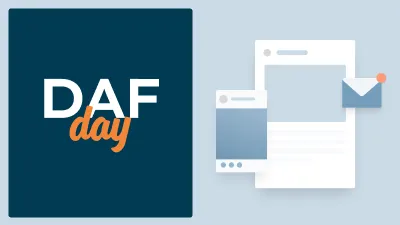Best practices for securing non-cash donations during tax season

Donating non-cash assets can seem confusing for many donors, and some donors are not aware of the ways they can mobilize their assets for your mission. Thus, it’s vital for nonprofits to educate supporters on different ways to give and connect with donors on potential tax benefits for each gift type. The months leading up to and throughout tax season are a critical time to make the ask for assets like stock portfolios, qualified charitable distributions from IRAs, grants from donor-advised funds, and cryptocurrency. With the right message and the right timing, your organization can be a helpful partner to donors by sharing the tax implications of these non-cash gifts.
1. Optimize your website to educate donors on non-cash gifts.
In order to make effective email appeals, you need to have a clear place to send your donors. Provide a dedicated page on your website listing each type of gift your organization accepts so donors know their options. It’s also beneficial to offer brief context on the tax advantages of each gift.
2. Lead with how your donor can make a greater impact without it costing more.
Over years of testing, FreeWill has found that interest in stock giving increases by almost 45% when donors are primed with information on the additional tax deductions they can receive from a donation of stock. Mention that when they give stock instead of selling it to give the cash equivalent, your donors can save money, give more at no additional cost, and make a larger impact on your organization. Stock donations are just one example — check out our blog posts on securing Qualified charitable distributions, DAF grants, and gifts of cryptocurrency.
3. Remind donors of their wealth.
Donors who think about giving out of their total assets rather than their disposable income donate 36% more. For example, when a donor considers a $1,000 gift against the amount they have in their checking account today, it may seem too large a percentage of their spending money. When they consider this same $1,000 gift as a percentage of their total wealth (all cash savings and non-cash assets, shares, personal property, real estate, etc.), the gift feels like a relatively small percentage of their net worth.
4. Use social proof in your messaging.
Social proof is a powerful, persuasive tactic for getting your supporters to give. When people see that someone else like them has taken an action, they often are more likely to copy them. For example, you can say “Many of our supporters are choosing to donate stock this year — will you join them?” This is a low-pressure way to spark their curiosity and invite them to learn more.
5. Treat your ask as “unusual.”
Framing a donation as an exceptional event removes it from comparison with regular disposable income. This significantly drives charitable giving. For example, saying “make a gift only once a year” is more effective than saying “make an annual gift.” This is also an opportunity to mention how tax season can be “the best time of the year” to donate non-cash assets as people often use this season to proactively organize their finances for the year. Further, as your organization continues to educate donors on how they can support your cause and their own finances, you remain top of mind for folks putting together their charitable giving plan for the year ahead.
6. Make it easy for donors to make their gift online.
Donating non-cash assets can seem daunting and complex to some donors. With helpful information on your website and a strong appeal, you can demystify the donation process and empower donors with an online giving platform.
FreeWill’s Smart Giving Suite is an all-in-one solution for employing the best practices we’ve listed above. Through a FreeWill partnership, your organization can offer donors intuitive, self-guided tools to make their non-cash donations online in about 20 minutes. In addition to reducing the risk of fraud, this will help you track your gifts and give your major gift officers a way to follow up with “in progress” donations. Not only will this help you hit your fundraising goals, but it will also increase donations from younger donors in particular, who are less likely to complete an in-progress gift at a later date.
Curious to learn more about partnering with FreeWill to amplify your non-cash giving strategy?
Curious to learn more about partnering with FreeWill to amplify your non-cash giving strategy?





